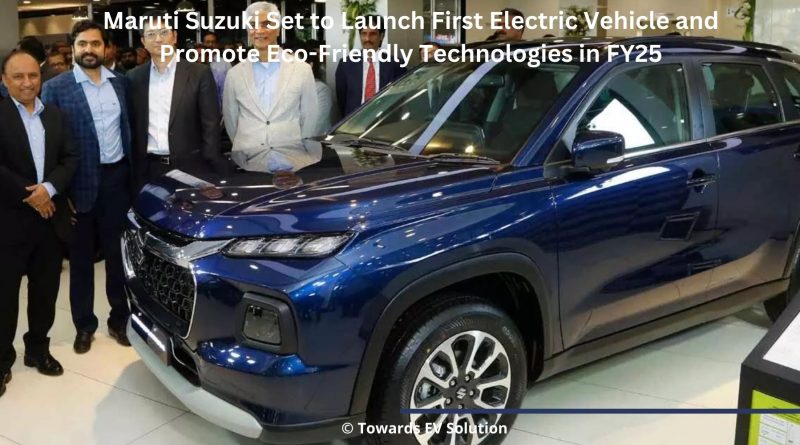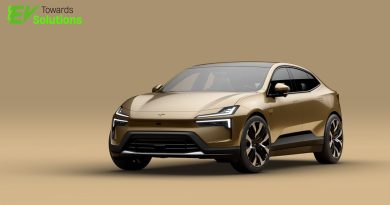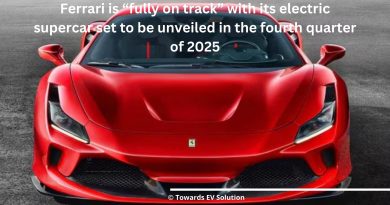Maruti Suzuki Set to Launch First Electric Vehicle and Promote Eco-Friendly Technologies in FY25
Maruti Suzuki, India’s leading automobile manufacturer, has announced plans to launch its first electric vehicle (EV) in Fiscal Year 2025. This strategic move aims to enhance the company’s eco-friendly technology offerings in response to the growing global demand for sustainable transportation solutions. The electric vehicle which is expected to cost between ₹10lakh – ₹15lakh ($12,000 – $18,000), which afford the product to a middle-class demographic. The very large dealer network and production capacity, Maruti Suzuki is believed to have the capability to roll out the ‘crossover’ models successfully.
Electric Vehicle Market Size
According to Precedence Research’s report, the global electric vehicle market size accounted for USD 255.54 billion in 2023 and is predicted to be worth around USD 2108.80 billion by 2033, growing at a solid CAGR of 23.42% from 2024 to 2034.
In 2023, approximately 14 million electric vehicles were sold worldwide, marking a 20% increase compared to 2022. By the end of 2023, electric vehicles accounted for nearly 18% of all new car sales globally, up from 10% in 2022. According to the International Energy Agency (IEA), the global electric vehicle stock is expected to exceed 300 million by 2030 under current policy scenarios. The global demand for lithium-ion batteries used in electric vehicles is projected to reach 2,800 GWh by 2030, driven by rising EV sales.
Global Electric Vehicle Sales (2021–2023)
| Year | Global EV Sales (Million Units) | Share of Total Vehicle Sales (%) | Growth Rate (%) |
| 2021 | 6.6 | 8.6 | – |
| 2022 | 11.7 | 10.0 | 77.3 |
| 2023 | 14.0 | 18.0 | 19.7 |
Electric vehicles emit, on average, 50% fewer CO2 emissions over their lifecycle compared to conventional internal combustion engine vehicles. By 2030, it is projected that 70% of global electric vehicle charging will come from renewable energy sources, further reducing emissions associated with EV operation.
Comparison of CO2 Emissions (Gasoline vs. Electric Vehicles)
| Vehicle Type | CO2 Emissions (g/km) | Lifecycle Emissions (g CO2) |
| Gasoline Vehicle | 140 | 100,000 |
| Electric Vehicle | 60 | 50,000 |
Governments around the world are implementing policies to support the transition to electric vehicles. Countries provide significant tax credits and incentives for EV buyers, such as the U.S. federal tax credit of up to $7,500 for electric vehicle purchases. The European Union plans to invest €25 billion to build a robust charging infrastructure network across its member states by 2025.
Maruti Suzuki has entered into an electrically powered vehicles market in the company’s period of the world’s shift towards sustainable mobility solutions. Setting up to unveil its first Ev, the company focuses on a share of such a rapidly growing market and also on being a part of the solution.
The expected model is the electric car to target environmentally friendly clients around the globe, which is an ongoing shift of countries to green cars. Government policies coupled with consumer demands make Maruti Suzuki the major driver of electric mobility in India. This sustainability has attained high importance in the auto industry with the entry of Maruti Suzuki in the EV segment.
Meet Mahima, a voice you’ll want to follow in the electric vehicle (EV) industry. With a rich background in journalism and mass media, Mahima doesn’t just report the facts; she tells the story behind the revolution. Her expertise of over four years in writing positions her uniquely as someone who knows how to engage, inform, and inspire her audience. Whether she’s diving into the latest EV technologies or exploring the future of sustainable mobility, Mahima delivers insights that go beyond the surface, making her work a must-read for enthusiasts, professionals, and curious readers alike.
In every article, blog, or feature, she brings a human touch to the world of electric vehicles. She weaves narratives that highlight how the shift toward electrification is transforming economies, reshaping consumer preferences, and pushing the boundaries of innovation. Her sharp analytical skills allow her to see connections others might miss, offering fresh perspectives on trends that are shaping the automotive landscape.




